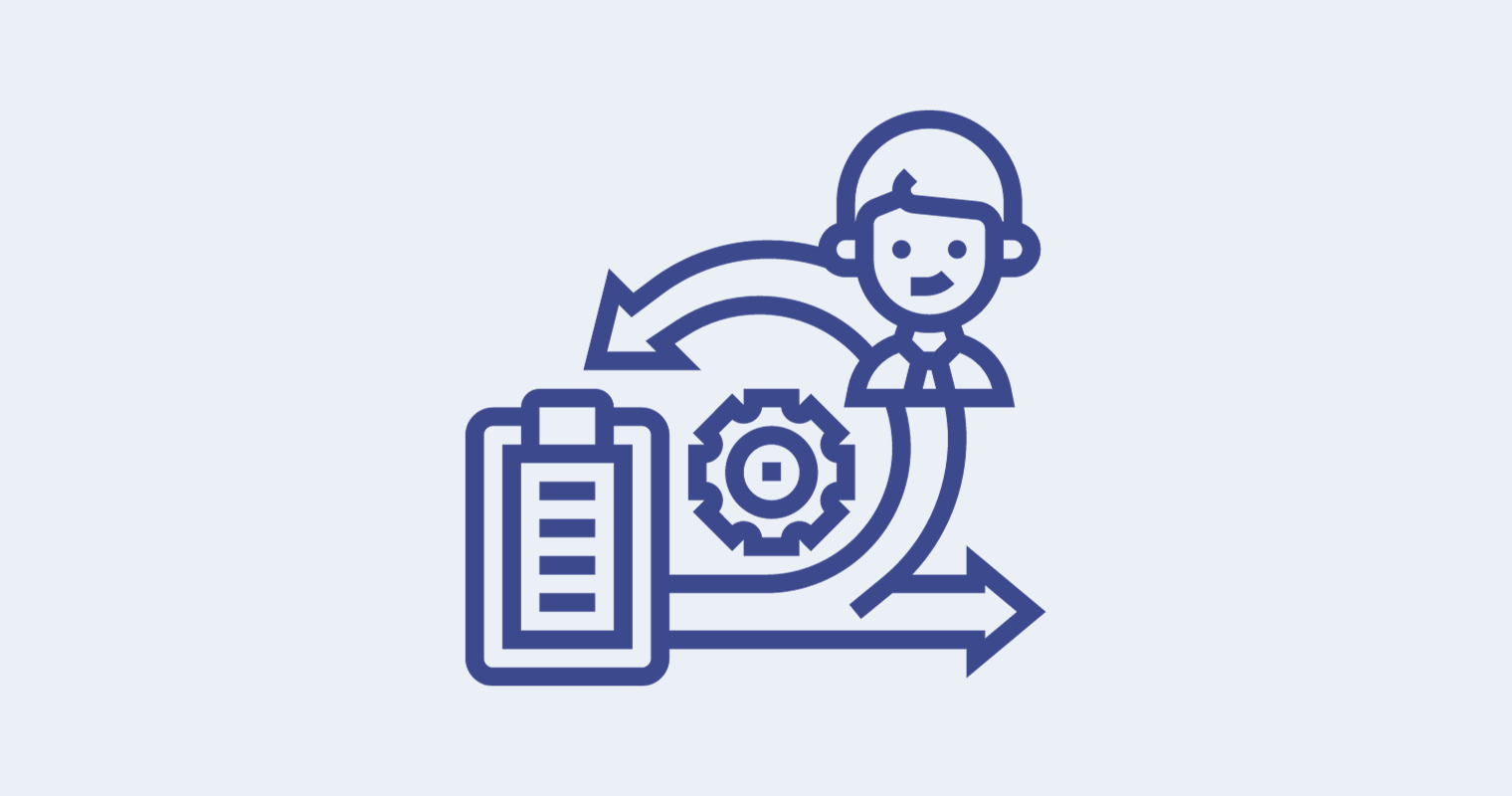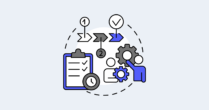Ever felt like you’re running a relay race, but your team isn’t in sync? That’s how managing projects can feel without the right methodology. Enter Scrum.
Scrum – not just for rugby anymore! This Agile framework was first introduced in 1995. Since then it’s been revolutionizing project and product management across industries. But what makes it so special?
You might’ve heard of it or maybe even dabbled in its practices. But to truly grasp its power, we need to dive deep into this dynamic world of sprints, stand-ups, and story points.
This post is more than an introduction to Scrum. It’s a comprehensive Scrum guide to help you understand its core principles, roles within a Scrum team, and key artifacts. You’ll also explore the process flow from planning to review. Let’s learn about Scrum!
Understanding Scrum: an overview
Scrum is a popular framework for agile project management. It’s designed to bring more focus, flexibility, and efficiency into product development. It originated in the software industry and has since spread across various sectors due to its proven success.
The term “Scrum” comes from rugby and represents a team working together to achieve a common goal. In a business context, this involves cross-functional teams collaborating intensively to deliver high-quality results quickly.
This methodology revolves around iterative work cycles (sprints). They typically last 2-4 weeks. Each Scrum sprint starts with planning where the team decides what they can accomplish during that period. An intense phase of work execution follows. Daily stand-up meetings help keep everyone on track during this stage.
Why would you turn to Scrum? Here’s a bit about that.
Scrum vs. Waterfall
Most project managers fall into two main buckets: Waterfall fans and Agile fans.
The Waterfall methodology is a more traditional project management approach. A project is divided into distinct stages. Progress is “flowing” steadily downwards through these stages like a waterfall. Each stage depends on the deliverables of the previous one and corresponds to a task.
Typical Waterfall stages include:
- Requirements gathering
- Design
- Implementation/coding
- Testing
- Deployment
- Maintenance & support
Waterfall might be a better approach for projects with very well-defined requirements from the start.
Traditional waterfall methods sometimes fall short because they lack adaptability. With Scrum, feedback is continuously incorporated. This allows products or solutions to evolve according to user needs or market trends.
But beyond agility lies another crucial benefit – visibility. Stakeholders get regular updates through sprint reviews. This makes them feel more involved in the process while also helping identify potential issues early on.
Scrum vs. Agile
So what exactly is Scrum, and what is Agile? Here’s an analogy to help: think of Agile as a recipe for making a dish, while Scrum is like one specific method used in that recipe.
The Agile framework is born from the Agile Manifesto. It’s an umbrella term covering various frameworks. They’re all focused on iterative development and value delivery. Agile encourages flexibility, customer collaboration, and responding to change swiftly.
Scrum, on the other hand, is just one approach within Agile. Think of it as using:
- Precise ingredients (roles)
- Measurements (events)
- Steps (artifacts)
“Scrum is a way to get work done as a team in small pieces. It involves continuous experimentation and feedback loops to learn and improve along the way.”
Scrum.org
Each is defined by its official guidebook. Keep reading to learn more about each of them.
The role distinction
In traditional project management structures (like Waterfall), roles are strictly defined based on hierarchy or specialization. With the Scrum framework, there’s more fluidity. Roles such as product owner or Scrum master emerge. Keep reading to learn more about various roles in the Scrum methodology. We will cover each role in detail later in the article.
Key principles of Scrum
Let’s explore some fundamental Scrum principles first.
Empirical process control
This principle emphasizes the three main ideas: transparency, inspection, and adaptation. Everyone involved in the project should have easy access to the results. The project should be regularly monitored and adjusted as necessary.
Self-organization
Scrum teams are self-organized and cross-functional. They decide on their own how to carry out tasks. This principle encourages active collaboration and engagement from all team members. As a result, teams notice higher efficiency, better problem-solving, and ownership of projects.
Collaboration
Scrum promotes active collaboration among team members and stakeholders. It encourages a deep level of engagement – to bring everyone to the same page.
Value-based prioritization
Scrum emphasizes delivering valuable features first. It prioritizes work that provides the most customer value. The product owner is primarily responsible for prioritizing the backlog. They guide the Scrum team toward delivering high-value features. Keep reading to find out more about product owners in this article!
Time-boxing
As we mentioned before, Scrum methodology uses time-boxed iterations called sprints. At the end of each sprint, the team delivers a potentially releasable increment of the product. This allows for rapid feedback and regular revisions.
Iterative development
This principle encourages us to be adaptive to changes and continuously improve the product and processes. Teams can focus on high-quality development by breaking down the project into manageable units.
Flexibility and responsiveness
Scrum adapts to changes quickly. Remember the continuous feedback we mentioned in section five about time-boxing? As the project evolves, it may change direction based on each sprint’s feedback and learnings.
Continuous feedback
Speaking of feedback – it’s crucial, especially during the development process. Daily stand-ups, sprint reviews, and retrospectives are integral to the process. They help everyone get a clear understanding of what’s in progress and what needs improvement.
Continuous improvement
Reflection and adaptation are embedded in Scrum practices. The team consistently looks for ways to improve the product, their work processes, and themselves. This typically happens during the retrospectives at the end of each sprint.
Let’s now go over people – who’s usually involved in Scrum processes?
Roles in Scrum methodology
The heart of Scrum methodology beats within its roles. The main roles include the product owner, the Scrum master, the project manager, and the development team. Let’s delve into each one.
The product owner
The visionary. This is the person who wears the customer’s shoes. The product owner understands what users need and prioritizes those needs to deliver maximum value. They also maintain the product backlog – a dynamic list of work items for future sprints. Finally, they build a bridge between the product vision and the execution.
The Scrum master
Your team’s coach. The Scrum master champions agile principles. They also remove obstacles that might slow down the team. And they shield the team from outside noise. Their main goal is not just to finish tasks but to improve how the team works.
The project manager
The team’s director. They plan, give tasks, and solve problems. They check the work and make sure tasks are done on time and within budget.
The development team
The actual team of players. It’s a group of professionals with all the skills to get things done. These are self-organizing software engineers and developers committed to delivering high-quality increments at the end of each sprint.
The product team
This team includes anyone else involved in this project. This may be a product manager, a designer, a product marketer, and others. They all share the same product goal and use the Agile methodology.
Note: each role has specific responsibilities, but it all comes back to teamwork.
Scrum artifacts and their significance
A Scrum artifact is a specific tool or record that delivers information. It’s like a shared document that helps align the team.
Let’s shed some light on the critical artifacts in Scrum: product backlog, sprint backlog, and increments. These components help teams track progress and stay transparent. Let’s explore each one.
The product backlog
This is a prioritized list of all the ideas, feature requests, and wishlist items for the product. It’s constantly evolving as it responds to business needs. It acts as a roadmap, guiding your team towards achieving the project’s overall vision.
The sprint backlog
The product team reviews the product backlog and chooses specific items for each sprint. That becomes the sprint backlog. It’s not set in stone. The team constantly adjusts it to reflect changes or new information.
The increments
Increments are tangible outcomes or “pieces” of working software. They are the result of each sprint.
Now that you know about crucial Scrum principles, roles, and artifacts, let’s move on to the process flow.
The Scrum process flow (aka ceremonies or events)
Let’s take a closer look at the Scrum process flow. Some people refer to it as Scrum ceremonies or Agile events. The steps are usually the same. We’ll illustrate with an example.
Product backlog creation
You remember the product backlog from the artifacts section. It’s time to create and use it!
The product owner talks to customers, stakeholders, and the team to decide what’s the most important. Customer feedback software like Canny comes in handy here. You can collect and analyze feedback all in one place.
Example: The product owner creates a Canny board and invites users to submit their ideas, upvote and comment on existing ones.
Sprint planning
Scrum team members gather for a meeting called sprint planning. Team members pick a product backlog item and plan what they will do in the next sprint.
Example: The Scrum team goes through the backlog in Canny and prioritizes ideas. They pick factors that matter the most to them, pay attention to user votes. They choose ideas that are at the top of the list. Those are typically urgent and very impactful.
Sprint
Now, the team starts the work cycle called the sprint. Team members work on the tasks from the sprint backlog. The goal is to create a “done,” usable, and potentially releasable product increment by the end of the sprint. The sprint usually lasts for 1-4 weeks.
Example: The Scrum team selected “dark mode” as their sprint project. They rely on user stories and create an epic for this project. They spend the next 3 weeks building only that. By the end of the sprint, dark mode isn’t perfect, but it’s good enough to be shipped into the world. It’s a ready MVP.
Daily Scrum
Every day, the team has a quick 15-minute meeting called the daily Scrum. They share updates, plan for the day, and discuss any problems they face.
Example: every day, the Scrum team shares their progress, discuss issues and blockers.
Work
The team works on the tasks, solves problems, and makes progress. They might talk with the Scrum product owner, stakeholders, or users to make sure they’re on the right path.
Example: the daily grind begins. The Scrum team focuses only on dark mode’s user stories to ensure it’s ready by the end of the sprint.
Sprint review
At the end of the sprint, there’s a sprint review meeting. The team shows what they’ve done. Everyone checks the work and discusses what to do next.
Example: the whole team gets together at the end of week three. They test the new dark mode together, trying to uncover areas for improvement.
Sprint retrospective
At this stage, the team discusses what went well, what didn’t, and how they can improve next time.
Example: the Scrum team gathers to debrief. They talk through what other team members brought up during the Sprint review.
Next sprint
After that, the cycle starts again with the next sprint. The product backlog is updated, and the team plans new tasks for the next sprint.
Scrum process flow is a loop of planning, doing, checking, and improving. And it’s all aimed at making a great product and team.
This structure exists to guide you. Try go with the flow and adjust as needed. But also try to stick to the structure to get the most out of Scrum.
Benefits of implementing Scrum
So why would you choose Scrum over other methodologies? There are a few advantages.
Increase in product quality
With Scrum, you’re constantly gathering and processing feedback. This ultimately leads to higher-quality products. That’s because you’re breaking down complex tasks into manageable sprints. That helps teams focus more on improving the product’s features with each cycle.
Better stakeholder satisfaction
Scrum encourages stakeholder involvement throughout the project lifecycle. This means stakeholders have frequent opportunities to provide input. They can also see progress in real time, boosting their confidence and trust.
Promotes team collaboration
Scrum encourages a cooperative work atmosphere. It promotes self-organization within teams, making them more adaptable to changes. Scrum also helps not to lose sight of goals or deadlines.
Faster delivery times
Last but not least: speed. Short sprint cycles allow for quicker releases and faster delivery times (compared to other methods).
Scrum comes with its own set of challenges. Consider them too when selecting a methodology to follow.
Challenges (and solutions) with Scrum
Implementing Scrum is not always smooth sailing. Let’s tackle some common challenges and how to surmount them.
Overall issues
Lack of understanding or knowledge
A lack of understanding of Scrum principles can make implementation challenging. You might know a lot about Scrum, but how about the rest of the team?
Some teams start using Scrum without really understanding it. They might skip parts of the process or add things that shouldn’t be there. People refer to this as “Scrum-But” syndrome.
Fear of change
People naturally resist change. Especially if your team is used to the traditional way of working, they may resist Scrum. It requires a different mindset, which can be tough for some people.
Scrum is about learning and adapting. Team members with a fixed mindset may struggle to grow or adjust to changes.
Here’s the antidote: communicate the benefits clearly so they understand why the change is beneficial.
Team challenges
Partial team dedication
Scrum teams should be dedicated. If team members juggle tasks from different projects, staying focused and productive is tough.
Ineffective Scrum master
A Scrum master should guide and support the team. A Scrum master who controls too much or too little can harm the team’s progress.
Poor product owner involvement
A product owner needs to be available, decisive, and informed. If they’re not, it’s hard for the team to know what to work on or how to prioritize.
Empower the product owner on your team – give them everything they need to do their job well.
Neglecting team health
Scrum is a fast-paced and demanding system. Teams need to address issues and improve all the time.
They might burn out or get frustrated if they focus on work and ignore problems or their health.
Make sure team members feel comfortable sharing their struggles or blockers. Give them a way to express themselves. Keep tabs on individual workloads and help manage them.
Everyday challenges
No clear “definition of done” (DoD)
If your team doesn’t have a clear DoD for each task, they may struggle with knowing when it’s completed. To get past this hurdle, establish explicit criteria that need to be met before marking any task as “done.”
Ignoring technical debt
Teams might rush to add more features, ignoring quality, or skipping good practices. This creates “technical debt” — like a messy room that no one cleans. It just gets messier over time.
Lack of feedback
Not getting regular feedback from real users can lead the team down the wrong path. It’s like walking with a blindfold.
External interference
Sometimes, outsiders interrupt the team or push them off track. Protecting the team’s focus is essential but can be challenging. There are always conflicting priorities. The Scrum master is usually responsible for this, so it’s imperative to help them do their job.
For more help navigating through potential pitfalls during your Scrum journey, check out resources like Mountain Goat Software’s guide on Agile Scrum practices.
Real-world examples of Scrum implementation
Enough with theory. Want to see how teams use Scrum in real life?
These stories are tangible proof that this methodology can truly revolutionize project management.
The FBI Sentinel project
In 2006, the FBI launched its Sentinel project. It was an ambitious endeavor to digitize their paper-based case management system. After years of struggling with a traditional waterfall approach, they shifted gears and adopted Scrum. The result? They delivered a fully functional system in just over a year.
ING
The Dutch banking group ING transitioned to using Scrum and Agile methodologies. They wanted to better respond to customer needs and the fast-paced changes in the banking industry. They restructured their IT department into cross-functional teams and adopted an Agile way of working. The new approach has improved time to market, boosted employee engagement, and increased productivity.
3M
This multinational conglomerate uses Scrum to manage new product development. They test new ideas and adapt to changes quickly. As a result, they deliver products that meet their customer’s evolving needs.
Salesforce
Salesforce is a leading cloud-based software company. Because Salesforce has multiple products, they need a way to manage them all effectively. Scrum helps with this. Thanks to this method, Salesforce maintains a high pace of development and delivers regular updates.
Scrum can be effective in many companies – from tech to banking, physical products, and government!
Scrum certifications
To effectively implement the Scrum method at your workplace, you might want some formal training first. Scrum Alliance and Scrum.org offer globally recognized certifications. A Scrum certification can boost your career prospects in project management.
Scrum is about embracing change, promoting collaboration, and striving for continuous improvement.
FAQs about Scrum
What is Scrum in simple terms?
Scrum is an agile framework for managing projects. It’s all about small, cross-functional teams collaborating to deliver results quickly and adaptively.
What is the difference between Scrum and Agile?
Agile is a broad philosophy of software development. Scrum is a specific method within it. In other words, all Scrum practices are Agile, but not all Agile methods are necessarily Scrum.
What is the purpose of the Scrum?
The purpose of Scrums lies in enabling team collaboration on complex tasks. It breaks them into manageable chunks called “sprints.” This allows for continuous improvement over time.
Scrum = game changer
Scrum is an Agile game-changer in project management.
You’ve now delved into what Scrum is, its principles, and its key roles. You’ve discovered how tasks move seamlessly from planning to review within the Scrum process flow.
We explored artifacts that enhance transparency and help track progress. And let’s not forget about the advantages of implementing this method!
Of course, there can be challenges when using Scrum. But remember, solutions exist for every problem you may face during implementation.
The real-world examples are proof that success with Scrum is achievable! So get ready to embrace change – your projects will become much more manageable!






